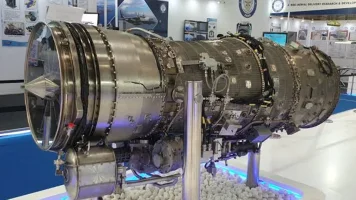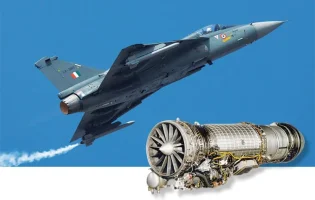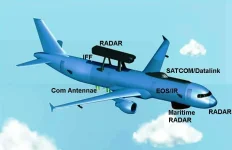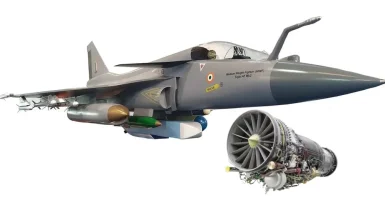- Views: 3K
- Replies: 15
A recently unveiled scale model of the Tejas Mk2 fighter jet has provided a glimpse into India's growing indigenous combat capabilities. The model showcases an advanced configuration designed for both strike and air missions, highlighting the aircraft's versatility as a multirole fighter.
The model boasts an impressive array of weaponry, including air-to-air and air-to-surface missiles, emphasizing its capacity for deep strike operations and defensive counter-air missions. This diverse loadout underscores India's commitment to developing a powerful and adaptable air force.
One of the most notable features of the model is the inclusion of two BrahMos Next Generation (NG) missiles. These supersonic cruise missiles, a smaller and lighter version of the original BrahMos, are specifically designed for fighter aircraft like the Tejas Mk2. With their extended range and precision strike capabilities, the BrahMos NG enhances India's ability to engage high-value targets.
Further demonstrating the Tejas Mk2's electronic warfare capabilities, the model features a centrally positioned RudraM 2 anti-radiation missile. This advanced missile is designed to suppress enemy air defences by targeting radar and communication systems, effectively clearing a path for other strike aircraft.
The model also showcases four Smart Anti-Airfield Weapons (SAAWs), highlighting the Tejas Mk2's role in area denial and anti-airfield operations. These precision-guided munitions can accurately destroy critical enemy infrastructure, such as runways and air defence systems, significantly hindering enemy operations.
For air-to-air combat, the model displays four Astra Beyond Visual Range (BVR) missiles, either the Mk1 or Mk2 variant. These missiles provide the Tejas Mk2 with the capability to engage enemy aircraft at long ranges, a critical advantage in modern aerial warfare. Additionally, the model features Advanced Short Range Air-to-Air Missiles (ASRAMs) on the wingtips, ensuring the aircraft's effectiveness in close-range dogfights.
This comprehensive suite of advanced weaponry solidifies the Tejas Mk2's position as a formidable multirole fighter. With enhanced strike capabilities, air superiority, and the ability to suppress enemy air defences (SEAD), the Tejas Mk2 is well-equipped to handle a wide range of modern combat scenarios.
The ability to carry such a diverse payload underscores the Tejas Mk2's multi-role flexibility. It can seamlessly transition between air-to-air combat, air-to-ground strikes, and electronic warfare, providing a significant advantage in the modern battlespace. This versatility enhances India's deterrence capabilities by demonstrating the ability to neutralize threats across multiple domains, from enemy aircraft to ground installations, ultimately strengthening national security.
The development of the Tejas Mk2 and its integration of indigenous weapon systems represent a significant leap forward for India's defence industry. This advanced fighter jet is a testament to India's growing technological prowess and its commitment to self-reliance in defence production. As the Tejas Mk2 progresses towards production, it is poised to become a cornerstone of the Indian Air Force, playing a crucial role in safeguarding the nation's airspace and strategic interests.





